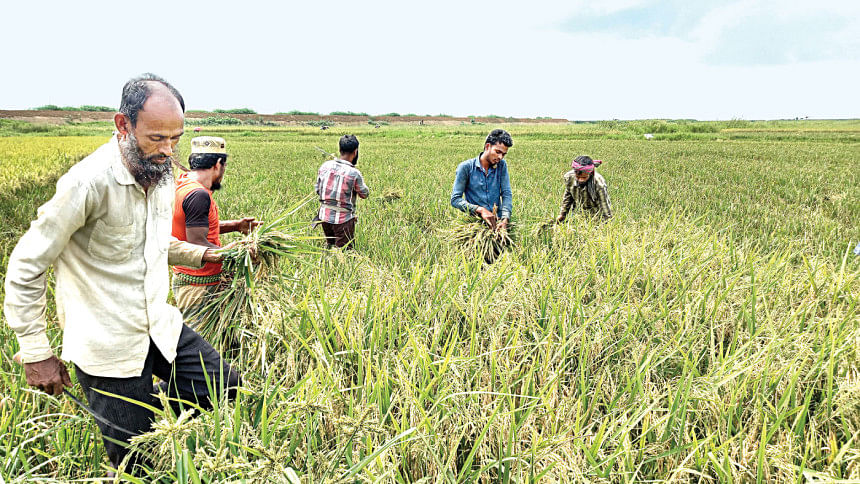Consumption of rice to rise marginally

Bangladesh's rice consumption may marginally rise to 3.7 crore tonnes in the marketing year (MY) 2022-23 as the government continues to run food assistance programmes for the poor for a recent food price hike, said the US Department of Agriculture (USDA) last week.
"Population growth will also lead to higher rice consumption in the coming years," said the agency in its annual grain and feed report on Bangladesh.
The USDA estimates that Bangladesh consumed 3.67 crore tonnes of rice in MY 2021-22 beginning from May, marking the harvest of Boro, the principal rice crop.
"Bangladesh's feed industry is also using broken rice as a filler in various feed formulas. Due to the recent high price of feed ingredients including soybean meal and corn, the feed industry will use rice as a supplement to other ingredients," it said.
The agency forecasts that milled rice production would increase 1.3 per cent year-on-year to 3.63 crore tonnes in MY 2022-23 on expectations of an increase in harvesting area.
The USDA said imports might slump in MY 2022-23 to 7 lakh tonnes, with the expectation of a bumper Boro harvest during the current harvesting season.
The agency did not take into account damage of crops for ongoing flash floods in haor areas in the northeast.
It estimates rice imports to amount to 13.5 lakh tonnes in the current MY 2021-22 ending this month because of good harvest of rain-fed crop Aman harvested in November and December of last year.
The government has also slapped a 62.5 per cent tariff to discourage imports to protect the interests of local rice farmers.
The USDA also predicted increased wheat imports by public and private agencies.
It said grain import may grow 1.3 per cent to 76 lakh tonnes in the July-June period of the year 2022-23, assuming an increasing and diversified use of wheat-based products for both the domestic and export market.
"Despite higher international wheat prices, Bangladesh is continuing to import to meet substantial domestic demand," it said.
India has been the preferred source, since Bangladesh started procuring wheat from the neighbouring country in significant volumes since 2020.
Shorter shipment times, low freight cost, and geographic proximity makes India one of the preferred sources of wheat for Bangladesh. Indian wheat is transported to Bangladesh via road and rail, it added.
The USDA said India supplied 26 per cent of the total wheat import, followed by Russia, Canada and Ukraine in MY 2020-21.
In the first seven months of MY 2021-22, India supplied approximately 2.8 million tonnes of wheat to Bangladesh and captured 66 per cent of the market share, followed by Ukraine and Russia, said the agency.
As of January 2022, Russia and Ukraine combined supplied approximately 9 lakh tonnes of wheat, down 40 per cent year-on-year.

 For all latest news, follow The Daily Star's Google News channel.
For all latest news, follow The Daily Star's Google News channel. 



Comments